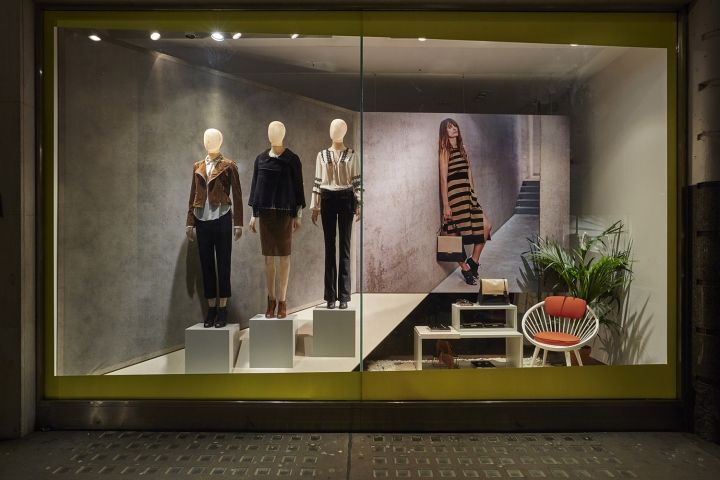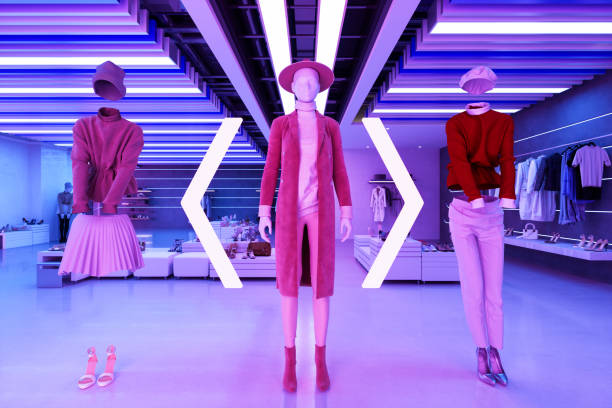Designer boutique tourism is an emerging niche in the travel industry that combines luxury fashion with cultural exploration. It allows a traveller to experience the world of luxury design, bespoke fashion, and exclusive retail experiences while discovering the artistic and cultural roots of the destinations he or she visits. This perfect blend of travel and couture has gained significant mileage among fashion enthusiasts, high-net-worth travellers, and those seeking personalized and exclusive experiences.
In this article, we talk about designer boutiques the global appeal, the most desired destinations, economic and cultural implications, and trends in designing its evolution.
What is Designer Boutique Tourism?
Designer boutique tourism refers to touring experiences centered on visitation to exclusive designer boutiques, ateliers, and fashion hubs. This type of tourism often includes:
1. Private Shopping Experience
- Access to a limited edition collection and personalized fittings.
2. Behind the Scenic Tours
- Knowledge of the designer’s craftsmanship and creative work
3. Workshop and Tailor-made
- Co-creation of fashion pieces or accessories with the designer
4. Cultural Exploration
- Understanding the cultures behind the fashion inspirations driving the local and global styles.
5. Luxury Accommodation and Services
- Accommodate at boutique hotels providing a well-crafted, tailor-made experience aligned to the theme.
Attraction of Designer Boutique Tourism
1. Exclusivity and Luxury
- Designer boutique tourism serves an elite audience that mass tourists do not have access to – a custom-made and highly exclusive experience.
2. Different Cultural Understandings
- People will learn more about the stories and traditions surrounding such icons and local handicrafts.

3. Tailored Fashion
- Guests can obtain customized pieces made to fit them perfectly.
4. Opportunities for Networking
- Participating in events and conversations frequently attracts fashion influencers, celebrities, and industry leaders.
5. Destination Discovery
- Iconic fashion capitals and rising design destinations offer a unique fusion of shopping and cultural discovery.
Key Destinations for Designer Boutique Tourism
1. Paris, France: The Haute Couture Capital
Must-see and do
- Private tours of such historic houses as Chanel, Dior, and Louis Vuitton.
- Visits to the Palais Galliera, Paris’s fashion museum.
- Exclusive fittings in haute couture ateliers.
2. Milan, Italy: The Heart of Italian Style
Must-see and do
- Personalized shopping tours in the Quadrilatero d’Oro (Golden Rectangle).
- Behind-the-scenes access to the iconic brands Gucci, Prada, and Versace.
- Workshops in leather crafting and bespoke tailoring.
3. New York City, USA: The Urban Fashion Hub
High Points
- Designer showrooms on SoHo and Fifth Avenue.
- Visits to emerging trends at the Fashion Institute of Technology (FIT) Museum.
- Fashion week participation and pop-up exhibitions.
4. Tokyo, Japan: Avant-Garde and Tradition
High Points
- Avant-garde fashion in the streets of Harajuku and Ginza.
- Traditional Japanese textiles and making of kimonos.
- Explore boutique hotels with fashion-forward interiors.
5. London, UK: A Heritage and Innovation Blend
Highlights
- Experiential bespoke suits tailormade at Savile Row.
- Exploring the newest of the new design, as at the Victoria and Albert Museum.
- Flagship Alexander McQueen and Burberry: get ready to be plunged into their worlds.
6. Dubai, UAE: Heaven for Luxury Shoppers
Highlights
- Access is reserved exclusively for designer collections in some of the world’s most luxurious malls, such as The Dubai Mall.
- Visit emergent local designers combining modernity with Middle Eastern style and elegance.
- Bespoke experiences of buying jewelry.
7. Developing Countries
- Seoul, South Korea: K-style influences create an emergent hub for global fashion.
- Cape Town, South Africa: Using the form of modernity to celebrate African heritage in contemporary design.
- Mumbai, India: Exploring the local artisan’s ethnic wear and handcrafted luxury.
Cultural and Economic Importance
1. Preservation of Tradition
- Designer boutique tourism helps keep old crafts alive, mainly by focusing on traditions through display.
2. Economic Stimuli to Locality
- High-end fashion tourism makes substantial revenue for local industries such as ateliers, boutiques, and the hospitality sectors.
3. Cultural Exchange
- Travelers learn about different cultures, traditions, and stories that inspire fashion; thus, there is mutual appreciation and understanding.
4. Support to Emerging Designers
- It offers a platform where upcoming designers can present their work to the world.
5. Urban Development
- The fashion district often triggers the renewal and development of urban sites, and it is then transformed into a cultural as well as commercial hub.
Designer Boutique Tourism Sustainability
1. Slow Fashion Advocacy
- To encourage tourists to spend on quality and sustainable pieces rather than fast fashion.
2. Green Practices
- Innovations include the increased use of green materials, reduced production with the use of greener practices, and almost zero packaging.
3. Local Crafts
- Ethical sourcing is promoted, giving artisans reasonable wages for a piece made.
4. Carbon-Free Experience
- Experiences have carbon offset travel for people traveling from farther places.
Trends That Shape Designers Boutiques Tourism
1. Digital Interface
- Virtual online shopping tours and AR-try-on, enhance the mode of buying.
2. Experiential Buying
- Boutiques are turning out to be a space for experiencing art installations and cafes, also holding live workstations.
3. Pop-Up Boutiques
- Temporary stores in unique places offer unique shopping experiences.
4. Personalization
- Data-driven personalization offers boutiques the opportunity to personalize experiences based on individual choice.
5. Fashion Sustainability Tours
- Brands and designers that are conscious of eco-friendly and ethical practices.
Design Boutique Tourism Challenges
1. Expensive
- Too expensive for many travelers in terms of exclusive experiences
2. Accessibility
- Accessible only in metropolitan areas, not within rural or less-developed regions
3. Over-Commercialization
- Excessive luxury focus will override the cultural essence of places.
4. Environmental Issue
- Luxury travel would degrade the environment if such tourist activity is not well maintained and operated.
Designer Boutique Tourism Future
The future of designer boutique tourism lies in achieving luxury with authenticity and sustainability. Major developments might encompass

Collaborative Programs: International brands partnering up with local artisans.
Technology-led Innovation: AI, and virtual reality, developing new ways of experience creation that allow a lot of immersion and personalization.
Core Values in Sustainability: Aligning the tourist experience with global goals in sustainability
Affordable Options: Options to fashion enthusiasts at different price ranges.
How To: Tourist and Designer Boutique Tourism
Prepare
- Research and book exclusive experiences in advance
Understand Local Culture
- Learn more about the culture that will influence local designs to add to your appreciation.
Support Emerging Designers
- Visit boutiques showcasing emerging designers
Invest in Quality
- Be sure to invest in those unique timeless pieces, rather than a hot item.
Respect Sustainability
- Choose brands that believe in ethical and eco-friendly production.
Conclusion
Designer boutique tourism is not luxury shopping; it is a way of artistic and cultural journey between the world of fashion and travel. It offers a traveler the opportunity to witness creativity and craftsmanship behind famous designs while exploring the cultural narratives that shape global fashion. This niche continues to grow with an emphasis on exclusivity, personalization, and sustainability that guarantees this niche will be as alluring to the consumers looking for style, sophistication, and substance.
